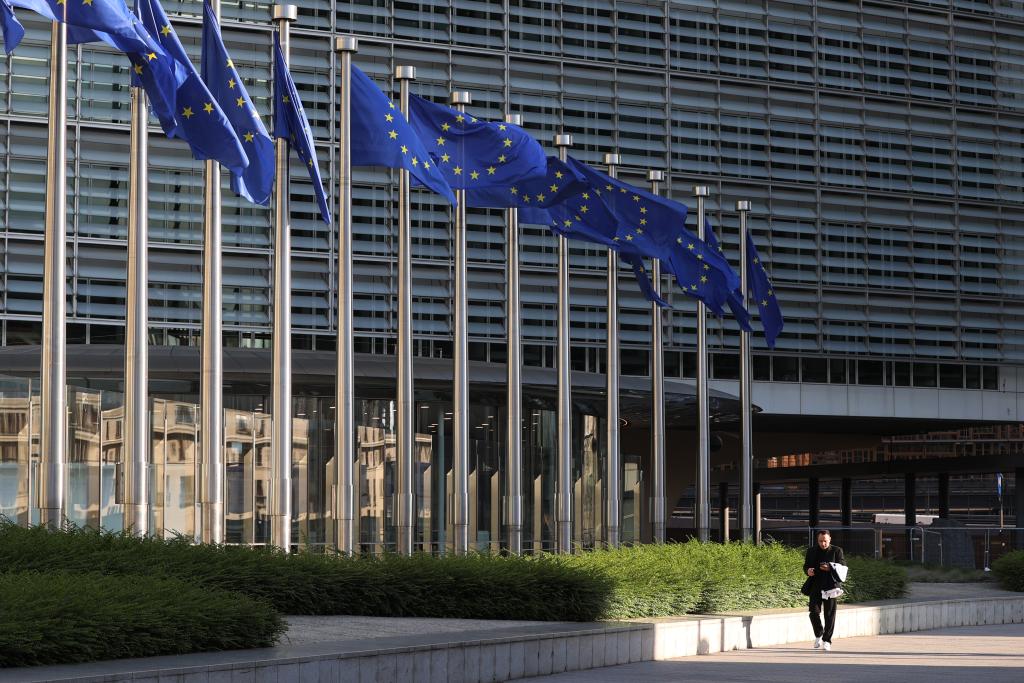AsianFin -- The European Union and the United States are reported to be nearing a trade deal that would set a baseline tariff rate at 15% as the bloc is preparing its massive retaliatory package once the negotiations fail to reach the acceptable deal.

Credit:Xinhua News Agency
The EU and U.S. are closing in on a trade deal that would impose 15% tariffs on European imports, mirroring a trade accord between the U.S. and Japan reached this week, the Financial Times (FT) learned from sources on Wednesday.
According to the sources, the 15% minimum tariffs, the same with that dictated by the U.S.-Japan deal on the Asian economy, would include existing duties, which means the current 25% auto tariffs would be brought down to 15%. It was said both the EU and U.S. would waive tariffs on some products, including aircraft, spirits and medical devices.
Brussels could agree to the 15% reciprocal tariffs to avoid such higher levies threatened by U.S. President Donald Trump, per the sources. Trump on July 13 released his letter to Ursula von der Leyen, president of the European Commission, dictating 30% tariffs on the EU exports starting August 1.
The EU and U.S. are progressing toward an agreement that would impose 15% tariffs on most products, Bloomberg cited diplomats following the FT report. EU officials are reportedly pushing to have the duties cover sectors including cars, while steel and aluminum imports above a certain quota would face a higher tariff of 50%.
The Guardian also learned from diplomats that the deal would place 15% tariffs on most imports from the EU, adding that it will grant certain exemptions from levies on products inlcuding aircraft and medical devices. It was said 15% tariffs would include the most-favoured nation tariff and would not be stacked on top of existing import duties faced by various sectors.
Both the Bloomberg and the FT cited a U.S. official that negotiations remain fluid. The EU will continue to prepare a possible €93 billion package of retaliatory tariffs, set at up to 30%, if they could not agree a deal by August 1, the White House’s self-imposed deadline, according to the FT sources.
The White House later Wednesday poured cold water on the reported possible deal with the EU. Discussion about any possible trade deals with the US should be considered “speculation,” unless they are announced by Trump, White House spokesman Kush Desai said.
The EU earlier that day threatened to impose 30% retaliatory tariffs on nearly €100 billion ($117 billion) worth of goods in case no deal by the August 1 deadline, and Trump moves forward with his threat of 30% tariffs. As a part of a first wave of countermeasures, the EU would combine an already approved list of tariffs on €21 billion of US goods and a previously proposed list on an additional €72 billion of American products into one package, a European Commission spokesman said.
The EU has finalized a second list of countermeasures to target American goods worth €72 billion, or $84 billion, including Boeing Co. aircraft, automobiles, bourbon, machinery products, chemicals and plastics, medical devices, electrical equipment, wines and other agricultural goods if it decides to retaliate against new U.S. tariffs, Bloomberg last week cited a 206-page list prepared by the European Commission. The news media outlet on Wednesday cited sources that industrial goods such as Boeing Co. aircraft, U.S.-made cars and bourbon whiskey, would face a levy that matches Trump’s 30% threat as part of the EU’s countermeasures.
Two senior Trump administration officials on Wednesday suggested the EU should follow suit after Japan made finance pledges to strike a trade deal with the U.S. Trump on Tuesday announced a “massive” deal including a 15% reciprocal tariffs on Japan. He said the Asian ally will invest $550 Billion into the U.S., and “open their Country to Trade including Cars and Trucks, Rice and certain other Agricultural Products, and other things.”
When asked whether other trading partners could get a similar reciprocal levy with Japan, U.S. Treasury Secretary Scott Bessent said Japan made U.S. bring down its reciprocal tariff rate “because they were willing to provide this innovative financing mechanism.” Bessent stopped short of saying the EU can win the same sort of trade deal as Japancut, but said “we’re making good progress” on talks with the bloc.
U.S. Commerce Secretary Howard Lutnick in a Bloomberg interview said Japan’s pledge of hundreds of billions in U.S. investments “could be” a model for the EU. He described Japan’s finance pledge as “equity, loans and loan guarantees”, and noted that would not be aimed at any individual project of Japanese companies.
“This is literally America saying, we want to build a generic pharmaceutical” plant, or a semiconductor fab, or critical-minerals facility, which Japan would then finance, Lutnick said. He also said to accept U.S. vehicle standards, like Japan did, and buy more American products would help the EU secure a more favorable deal.







